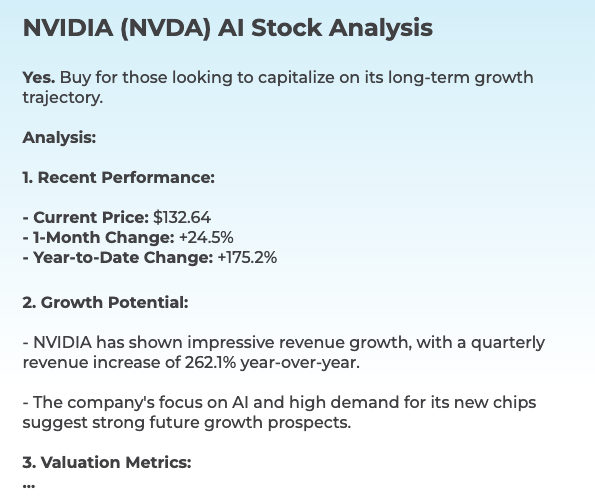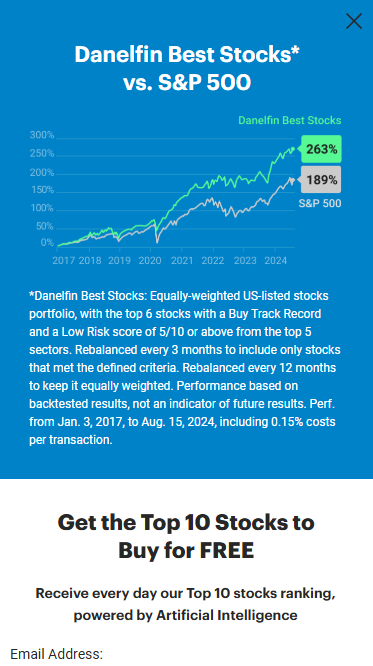Top 10 Tips To Assess The Market Coverage For Ai Software For Predicting And Analysing Stocks
When looking at AI trading platforms that forecast or analyze the market, coverage of the stock is a crucial aspect to consider. It determines what types of assets and markets are available. A platform with extensive market coverage will allow you to diversify your portfolio, discover new opportunities around the world, and adjust to various trading strategies. These are the top 10 tips to evaluate the market coverage offered by these platforms:
1. Evaluate Supported Asset Classes
Stocks: Make sure your platform supports major stock exchanges, including NYSE, NASDAQ LSE and HKEX and includes small, mid and large-cap stocks.
ETFs Check whether the platform lets you choose from a large number of ETFs that will give you diversified exposure.
Futures and options. Make sure the platform includes derivatives like options, futures, and other instruments leveraged.
Forex and commodities: Check if the platform supports forex pairs, precious-metals, energy commodities and agricultural products.
Cryptocurrencies: Verify if the platform works with major cryptocurrencies including Bitcoin and Ethereum, and alternative coins.
2. Verify coverage in your area
Global markets: Make sure that the platform covers all major global markets, including North America, Europe, Asia-Pacific, and emerging markets.
Regional focus: Find out whether your platform has a distinct market or market that is compatible with your trading needs.
Local exchanges. Check whether the platform permits local or region exchanges, that are relevant to your geographical location or business strategy.
3. Delayed Data Vs. Delayed Data
Real-time Data: Make sure that the platform provides real-time information for trading, and for making timely decisions.
Delayed data: Check if delayed data is available at no cost or at a cheaper cost. This could be enough for long-term investors.
Latency of data. Find out if your platform minimizes latency in real-time data feeds.
4. Assess the historical data availability
Depth historical data: Check whether the platform has extensive historical information (e.g. more than 10 years of data) for backtesting and analysis.
Check for granularity. Historical data may include intraday, daily and weekly granularity.
Corporate actions: Make sure that the historical data taken into consideration stock splits (if appropriate), dividends and other corporate actions.
5. Check market depths and order books
Level 2 data: Make sure that the platform has Level 2 information (order book depth) to facilitate price exploration and execution.
Find out if there is a real-time bidding system and asking spreads. This will guarantee that the price is correct.
Volume data - Verify whether the platform has extensive volume data to analyze the market's activity and liquidity.
6. Review the coverage of Indices & Sectors
Major indexes - Ensure that your platform works with the major indices like S&P 500 and FTSE 100 to benchmark.
Sector-specific data: See whether the platform has information for certain sectors (e.g. technology or healthcare, energy,) to conduct a targeted analysis.
Customized indices. Make sure the platform has the capability to track or build customized indices that meet your needs.
7. Evaluate Integration with Sentiment Data and News
News feeds: Make sure the platform incorporates real-time news feeds that come from reliable sources (e.g., Bloomberg, Reuters) for events that affect the market.
Sentiment analysis: Check whether the platform has sentiment analysis tools that are based on news, social media or other data sources.
Event-driven trades: Verify the platform's support for trading based on events (e.g. announcements on economic data or earnings announcements).
8. Check for Multi Market Trading Capabilities
Cross-market trading: Ensure the platform is able to trade across multiple markets and asset classes from a single interface.
Currency conversion: Check if the platform is compatible with multicurrency accounts and currency conversions to facilitate international trading.
Support for time zones: Verify whether your platform permits you to trade in multiple time zones.
9. Review the coverage of different data sources
Alternate data sources: To get unique insights, verify if the platform is able to incorporate alternative data sources.
ESG data: Determine if the platform has environmental Governance, Social and Governance (ESG), or other data that can help investors make socially responsible decisions.
Macroeconomic data: Ensure that the platform is able to provide macroeconomic indicators (e.g. GDP, inflation, interest rates) to conduct a fundamental analysis.
Review user feedback and market reputation
User feedback is a great way to evaluate the market reach of a platform.
Reputation in the industry: Find out if the platform is recognized for its market coverage by industry experts or by awards.
Case studies and testimonials: These will highlight the platform's performance in certain market segments or asset classes.
Bonus Tips
Trial period: Try the platform for free to test how it covers market trends and what data is available.
API access: Verify that the API is available on the platform that allows you to programmatically access market data for custom analysis.
Customer support. Be sure the platform can provide support in relation to data or market inquiries.
Use these guidelines to assess the market coverage offered by AI stock trading platforms. Select a platform that offers access to the market, data and tools you need to be successful in trading. You can broaden your portfolio and take advantage of new opportunities with the help of broad market coverage. Follow the recommended ai for stock trading examples for blog tips including best ai for trading, ai investing app, AI stock trading, ai trading, trading with ai, chatgpt copyright, ai chart analysis, ai investment platform, ai investment platform, AI stock market and more.

Top 10 Tips For Evaluating The Trial And Flexibility Ai Stock Predicting/Analyzing Platforms
Before signing up for a long-term deal, it's important to test the AI-powered stock predictions and trading platform to see what they can do for you. Here are the top 10 suggestions to assess these elements:
1. Try it for free
Tip Check to see whether a platform offers a free trial for you to try out the features.
The reason: The trial is a fantastic way to test out the platform and evaluate it without any financial risk.
2. The Trial Period and its Limitations
Be sure to check the length of the trial as well as any restrictions.
The reason: Once you understand the limitations of the trial, you can determine whether it is a thorough review.
3. No-Credit-Card Trials
Look for trials that do not need you to provide the details of your credit card prior to the trial.
The reason: This can reduce the possibility of charges that are not planned and make it easier for you to cancel your subscription.
4. Flexible Subscription Plans
Tip: Check if there are clear pricing tiers and flexible subscription plans.
Why flexible plans let you to pick a level of commitment that is suitable to your needs and budget.
5. Customizable Features
TIP: Make sure the platform can be customized for options, like alerts, risk levels, or trading strategies.
Why: Customization allows for the platform to be adapted to your specific requirements and preferences in terms of trading.
6. Simple Cancellation
Tips: Make sure you know how simple it is to downgrade or cancel your subscription.
Why? A simple cancellation process lets you to not be stuck with a program that is not a good fit for you.
7. Money-Back Guarantee
Check out platforms that offer 30-day money-back assurance.
Why this is important: It gives you an additional layer of protection in case the platform does not match your expectations.
8. Access to Full Features During Trial
TIP: Make sure that the trial provides access to all the core features and not just a limited version.
The reason: Trying out the full functionality can help you make an informed decision.
9. Support for customers during trial
You can contact the customer service throughout the trial time.
You can get the most out of your trial experience by getting the most reliable support.
10. Post-Trial Feedback System
Examine whether the platform is asking for feedback from its users following the test to improve its service.
What's the reason? A platform that values user feedback is likely to grow faster and better meet users' needs.
Bonus Tip Options for Scalability
As your trading activity grows it is possible to upgrade your plan or add more features.
Before making any financial commitment, carefully evaluate these trial and flexibility options to decide if AI stock prediction and trading platforms are the most appropriate for you. Follow the recommended trading ai tool for more tips including ai investment tools, AI stock predictions, best AI stocks, ai copyright signals, ai in stock market, AI stock analysis, AI stock trader, ai investment tools, ai options, ai share trading and more.

Comments on “20 New Ideas For Picking AI Stock Trading Sites”